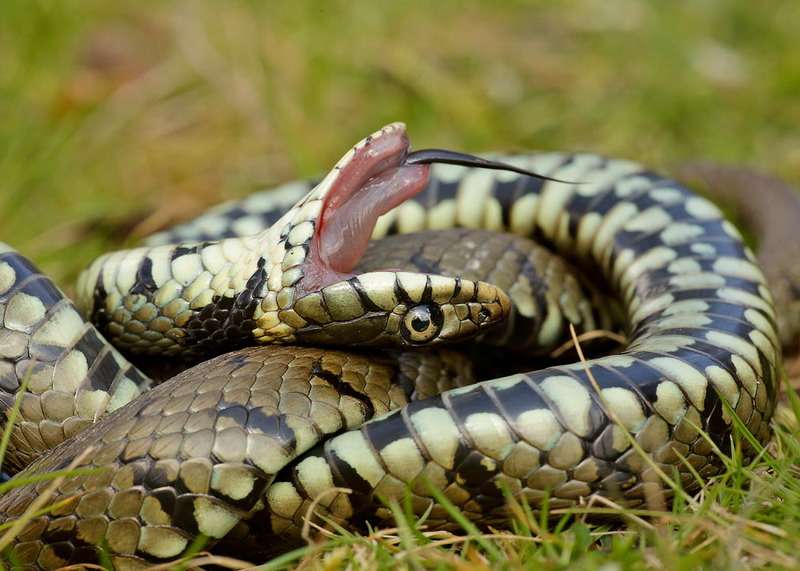
Description:
Scientific name: Natrix natrix
Life span: Up to 25 years
The grass snake is a non-venomous snake native to Eurasia. It frequently inhabits areas near bodies of water and eats virtually solely amphibians. The alternate name Ringed snake refers to the Grass snake’s distinctive yellow collar, which is often dark green or brown in hue. In colder climates, darker colors are more common apparently because of their thermal advantages.

Native Region/Habitat
Grass snakes can be found all over continental Europe, from southern Italy to central Scandinavia. They can also be found in northwest Africa and the Middle East. These snakes can be found near freshwater and are strong swimmers.
Behavior:
Grass snakes live in isolation. They are active during the day and actively hunt for prey, frequently at the water’s edge, using their vision and nose. These snakes normally spend the winter underground hibernating. Green snakes tend to search vigorously after mating in the summer and may travel far during this time, covering up to several hundred metres in a day. Throughout the course of an entire season, a single snake may only require two or three big prey items.
As green snakes lack veins, their primary means of protection is to “play dead” by becoming entirely limp or to secrete a fluid with a garlicky odor from their anal glands. In a display of aggression, they may sometimes strike and hiss without opening their mouths. Rarely do they bite in defense. When pretending to be dead, they could also sneeze or spit blood. When caught, they frequently vomit their stomach contents. The rare but well-known defense action of grass snakes involves lifting the front of the body and flattening the head and neck to imitate a cobra’s hood.
Care As a pet/In captivity:
Enclosure: Grass snakes can reach lengths of 4 to 6 feet; therefore, you need to provide them with an enclosure that is around the same length and at least 1 foot wide, preferably 1.5 to 2 feet wide. It should be able to carry at least 40 gallons in volume.
Humidity: As grass snakes naturally inhabit temperate regions, you won’t need to significantly change the temperature to keep them comfortable. Depending on the climate in your area, the humidity should be between 50% and 70%, thus you may probably leave it as it is.
Temperature: The ideal environment for grass snakes throughout the day is between 70 and 75 degrees Fahrenheit. On one side of the enclosure, you should also provide a hot place where they can bask to raise their body temperature. The temperature here should be around 80 degrees F. Heat lamps, heat mats, or a combination of the two can be used to warm the tank.
Diet: Feed a defrosted pinky mouse to baby grass snakes. When a snake reaches a certain size, it can eat gigantic mice and larger mice. A grass snake adult has to eat once every two weeks. If they are fed once a week, they may gain weight. Moreover, they have a protracted food-spare period.
Table





